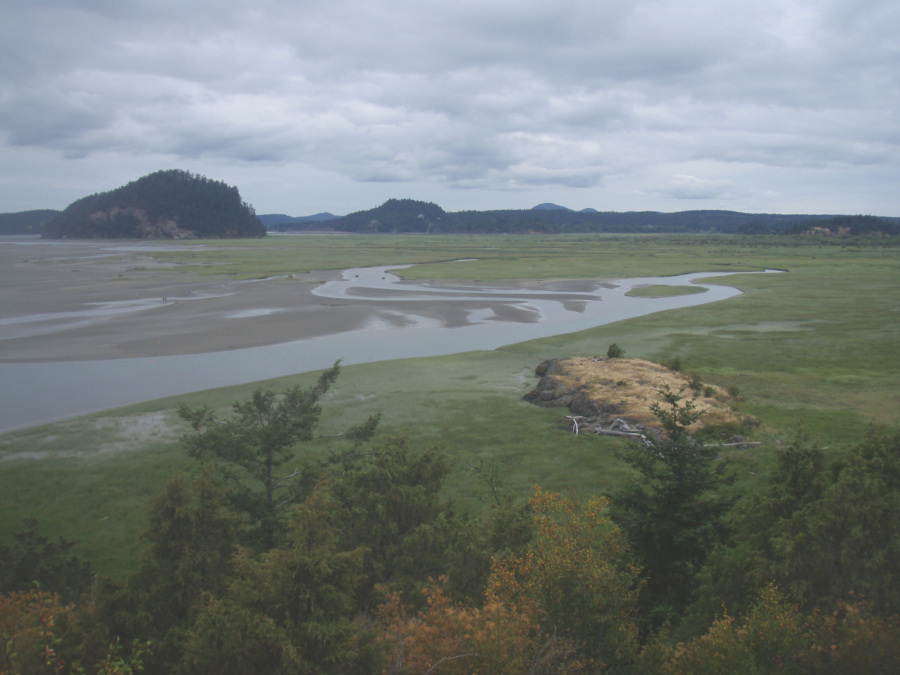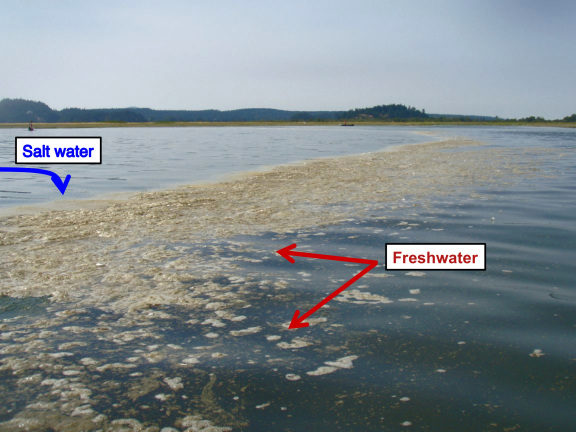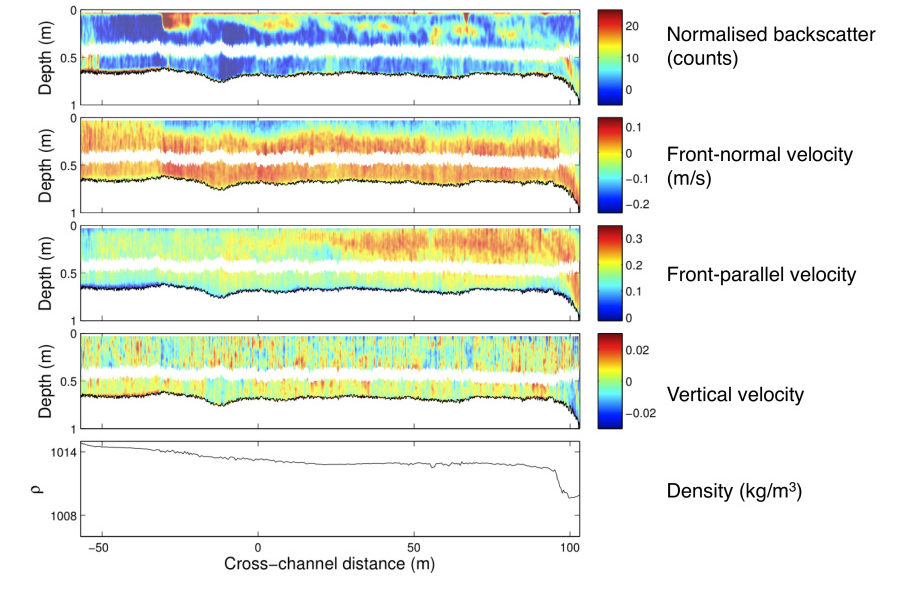Front trapping along tidal channels
As part of a multi-investigator project studying flows over tidal flats, Steve Henderson and I (along with an excellent field crew) examined physical aspects of flows on the Skagit Bay tidal flats, Washington.
We observed striking surface fronts which formed early on during the flood tide and tended to align along the edge of the tidal channels Skagit Bay tidal flats (the figure shows the visible channels which are fed with freshwater from the Skagit River). Underneath the fronts the dense salty water of the incoming tide cascaded down into the freshwater channel.
We observed striking surface fronts which formed early on during the flood tide and tended to align along the edge of the tidal channels. Underneath the fronts the dense salty water of the incoming tide cascaded down into the freshwater channel (see photo of front indicated by scum line below)
As the flood tide progressed the fronts were eventually released from the channel edge and propagated across the tidal flats as the leading edge of a very thin (approximately 30cm) fresh surface plume. A novel technique with boat-mounted high resolution acoustic doppler current profilers allowed us to follow the progress of this plume. Measurements of the plume and front as they propagated across the tidal flats are also shown below. The horizontal white band in the middle is a gap between two instruments and also shows the depth of the density measurements. On occasions, we followed the plume and front for several kilometers west across the tidal flats. A paper describing this process is Mullarney and Henderson (2011), Journal of Geophysical Research – Oceans 116.


